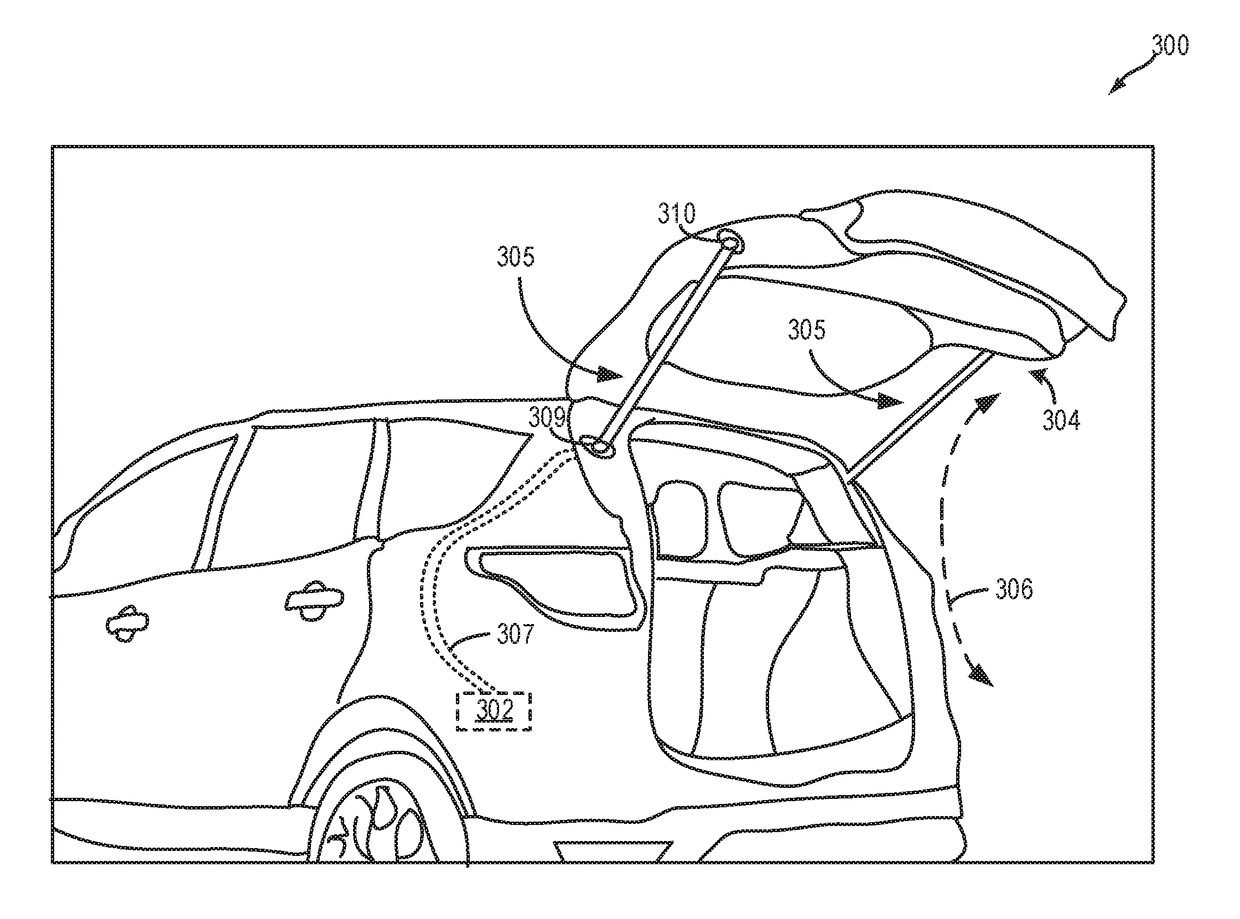Systems and methods for vehicle evaporative emissions system diagnostics
a technology of evaporative emissions and diagnostics, applied in the direction of piston pumps, electric control, instruments, etc., can solve the problems of limiting the rate of pressure or vacuum development, prone to false failure of eonv test based on customer, false failure, etc., to achieve higher pressure in the fuel vapor system, facilitate the venting process, and raise the effect of lowering
- Summary
- Abstract
- Description
- Claims
- Application Information
AI Technical Summary
Benefits of technology
Problems solved by technology
Method used
Image
Examples
Embodiment Construction
[0018]The following description relates to systems and methods for using vacuum and higher pressure generated via lift gate cylinders for diagnostics of an evaporative emissions control system. An example vehicle system with an engine and an electric motor is shown in FIG. 1 and a detailed description of the engine system comprising an evaporative emissions control system and fuel system is shown in FIG. 2. An example of lift gate cylinders coupled to a vehicle trunk used for the evaporative emissions control system diagnostics is shown in FIG. 3. An engine controller may be configured to perform a control routine, such as the example routines of FIGS. 4 and 5 for carrying out the evaporative emissions control system diagnostic tests during opening and subsequent closing of a vehicle body element such as a hood or a trunk, using lift gate cylinders. An example of the diagnostics routine is shown with reference to FIG. 6.
[0019]Turning now to the figures, FIG. 1 illustrates an example...
PUM
 Login to View More
Login to View More Abstract
Description
Claims
Application Information
 Login to View More
Login to View More - R&D
- Intellectual Property
- Life Sciences
- Materials
- Tech Scout
- Unparalleled Data Quality
- Higher Quality Content
- 60% Fewer Hallucinations
Browse by: Latest US Patents, China's latest patents, Technical Efficacy Thesaurus, Application Domain, Technology Topic, Popular Technical Reports.
© 2025 PatSnap. All rights reserved.Legal|Privacy policy|Modern Slavery Act Transparency Statement|Sitemap|About US| Contact US: help@patsnap.com



